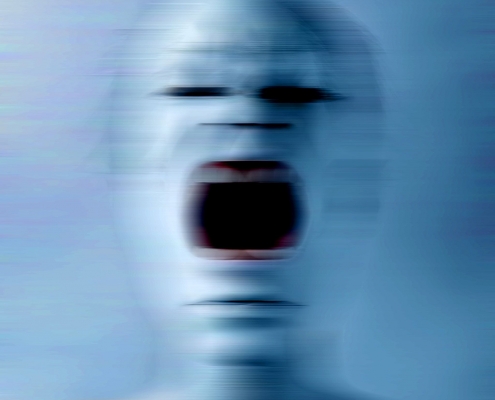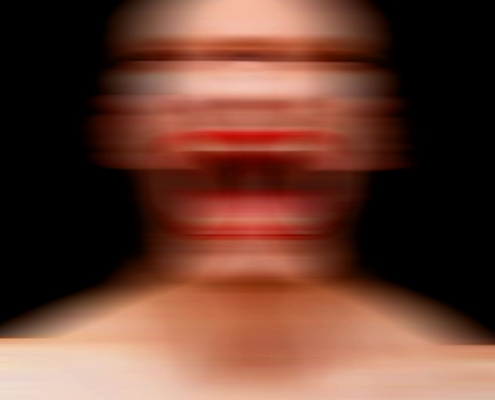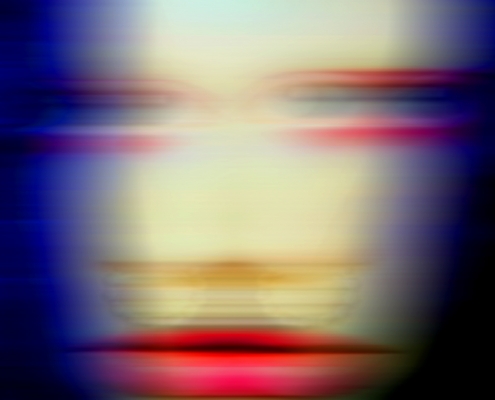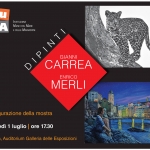Giuseppe Piccione – BEHIND THE MASK – NOTO
BASSI PALAZZO NICOLACI di Villadorata
Sabato 26 giugno 2021 ore 19.00
in via Nicolaci
Le opere figurative di GIUSEPPE PICCIONE invocano un mantra, un ripetere il ritmo della vita nascosta dietro le maschere apparenti della realtà multiforme. Un forma a servizio del rito sacro dell’arte. Molte forme che invocano una sola forma. La ricerca di un archetipo, ma irraggiungibile.
La narrazione visiva, che spazia dall’urlo di dolore, allo stupore della morte e della vita ai margini delle donne di periferia, ai segni di una sessualità mercificata, si impone come una recita ad alta voce, un grido di richiesta di aiuto che molti di noi nel loro intimo elaborano ma fingono di non avere: dietro una maschera.
Maschere in serie. Ritmo pop. Un mantra, un rullo di tamburi tribali. È così che Piccione espone in immagine visiva un vissuto sonoro. Come un rapper suburbano: voci di periferia e di margine. Voci che anelano. Voci che emergono portandosi al centro dell’attenzione del fruitore della mostra.
Il mantra visivo delle opere, eseguite con una serialità ritmica che solo un artista maturo sa fare, si manifesta a volte ad alta voce, a volte appena sussurrato. Questa ripetizione della stessa maschera, ma sempre con attributi plastici differenti, ricerca di colori irreali, forme che sembrano sublimare una libido incompiuta, è una ripetizione-preghiera. Una visione spirituale dell’arte sociale.
Piccione è un artista che si fa contaminare dal dolore degli altri, degli emarginati, dal caos interno della disabilità, dalla ricerca di purezza della prostituta, dalla pietà di un padre in braccio a un figlio. Dietro queste maschere si cela un’aurea, quella della serialità; e ci fa comprendere come l’arte contemporanea possa erodere spazi alla religiosità tradizionale facendo rivivere una spiritualità che si ispiri a sentimenti autentici. Siamo in presenza di un tentativo di costruire una vera e propria religiosità estetica.
Se è vero che Andy Warhol fece diventare simbolo della Pop Arte delle scatole di detersivo, Piccione sembra voglia far diventare le maschere-tribe un simbolo di una spiritualità perduta dalla cultura di massa; andando a ricercare – dalla cosa all’invisibile – l’angelo custode che dorme dentro ciascuno di noi e che necessita di essere risvegliato. Per far compiere un atto religioso: quell’atto a cui anela l’arte del post-moderno.
La serialità dell’opera di Piccione si pone – pertanto – proprio in antitesi alla riproducibilità da cui è afflitta la cultura visiva della società contemporanea. È così che il giudizio estetico che il fruitore della mostra è orientato ad elaborare, non può non considerare la critica sociale al meccanismo della riproducibilità della merce-uomo.
biografia
Le sue sono “creature” di un mondo dagli sviluppi accelerati, una dinamica sovrapposizione di segni, visibili vettori d’intimi e risoluti scenari.
Trovano vita e si autorigenerano nella moltiplicazione grafica e iconografica di un concetto moderno: la ” città che sale”. Come fenomenologia da strada, loro, invadono l’universo mediatico, si contaminano, rivelano celate attinenze. Giuseppe Piccione ruba per noi dalla realtà tali frammenti di vita, riconosciuti attraverso una poetica transizione esistenziale.
Piccione’s figurative works invoke a mantra behind the rhythm of life hidden behind the apparent masks of multifaceted reality. A form at the service of the sacred rite of art. Many forms invoke only one form. The search for an archetype, but unattainable.
The visual narrative, which ranges from the scream of pain to the amazement of death and life on the margins of suburban women, to the signs of a commodified sexuality, imposes itself as a loud recitation, a cry for help that many of us in their intimate elaborate but pretend not to have: behind a mask.
Masks in series. Pop rhythm. A mantra, a tribal drum roll. This is how Piccione exposes a sound experience in a visual image. Like a suburban rapper: suburban and marginal voices. Voices that yearn. Voices that emerge and become the centre of the attention of the user of the exhibition.
The visual mantra of the works, performed with rhythmic seriality that only a mature artist can do, is sometimes manifested aloud, sometimes just whispered. This repetition of the same mask, but always with different plastic attributes, the search for unreal colours, shapes that seem to sublimate an unfinished libido, is a repetition-prayer. A spiritual vision of social art.
Piccione is an artist who lets himself be contaminated by the pain of others, of the marginalized, by the internal chaos of disability, by the prostitute’s search for purity, by the pity of a father in the arms of a son. Behind these masks, there is an aura of seriality, and he makes us understand how contemporary art can erode spaces for traditional religiosity by reviving a spirituality inspired by authentic feelings. We are in the presence of an attempt to build an authentic aesthetic religiosity.
If it is true that Andy Warhol made detergent boxes become a symbol of Pop Art, Piccione seems to want to make tribe-masks become a symbol of a spirituality lost by mass culture; going to search – from the thing to the invisible – the guardian angel who sleeps inside each of us and who needs to be awakened. To have a religious act performed: that act that post-modern art yearns for.
Therefore, the seriality of Piccione’s work stands precisely in antithesis to the reproducibility which afflicts the visual culture of contemporary society. This is how the aesthetic judgment that the fruit of the exhibition is oriented to elaborate cannot fail to consider the social criticism of the mechanism of the reproducibility of the commodity-man.
……………………………………………………………..
biografy
……………………………………………………………..
Born in Syracuse in 1967, Giuseppe Piccione spent his entire childhood in South Africa. He grew up between his father’s creativity as a building builder and his mother’s sartorial and culinary creativity. In Italy, then followed his artistic studies and enrolled in Architecture in Florence. In 1986 he created his first informal works of art. From 1990 to 2021, he successfully exhibited in Italian and foreign galleries in twenty-seven personal exhibitions and forty-seven group exhibitions. Works by him are kept in public and private collections. The versatile and complete visual artist communicates with installations, painting, video art, photography, and digital techniques. The therapist’s role for psychiatric, autistic, and disabled subjects is not separated from his activity, indeed closely connected to it. In the last ten years, his production includes some artistic projects in continuous formal development: “Love Street” and “The Tribe”, both conceived for an artistic variation as wide as possible up to encroaching on the field of fashion and design, with the definition of a line of wearable works of art called “Tràncity”.
His are “creatures” of a world of accelerated developments, a dynamic superimposition of signs, visible vectors of intimate and resolute scenarios.
They find life and regenerate themselves in the graphic and iconographic multiplication of a modern concept: the “rising city.” Like street phenomenology, they invade the media universe, contaminate themselves, reveal hidden connections. Giuseppe Piccione steals these fragments of life from reality for us, recognized through a poetic existential transition.







